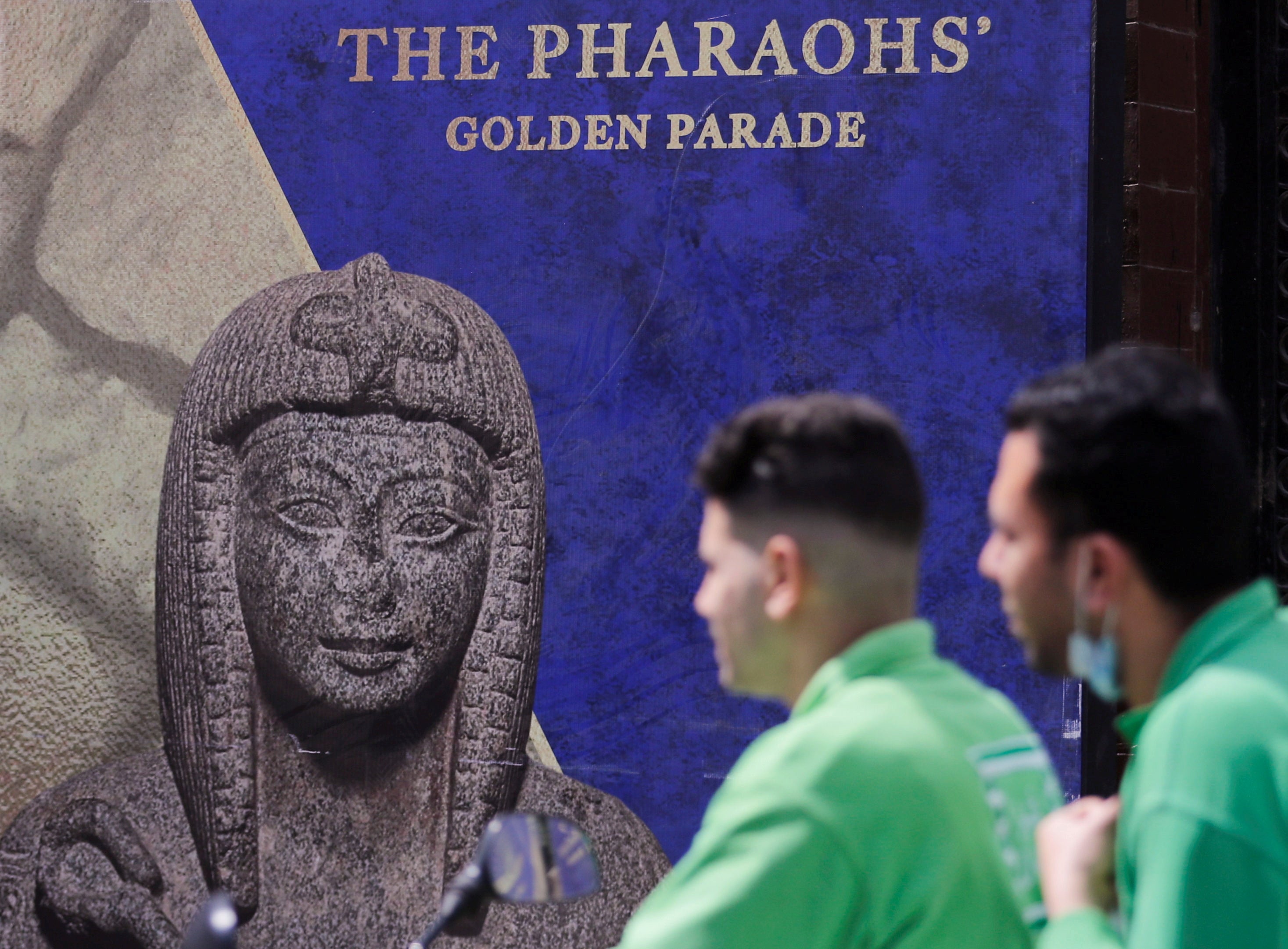Pharaohs’ Golden Parade: Egyptian mummies parade through Cairo
The ancient kings and queens are being moved to a new museum

Egyptians will line the streets of Cairo to watch a procession of mummified kings and queens pass through the historic city on Saturday evening.
Twenty-two royal mummies will be transported in specially-designed capsules from the Egyptian Museum in central Tahrir Square to the National Museum of Egyptian Civilization in Fustat, about three miles to the south-east.
The so-called Pharaohs’ Golden Parade will be a multi-million dollar event with tight security arrangements. Authorities will shut Tahrir Square and other sections of the route ahead of the start at 6pm local time (4pm UK).
The 18 kings and four queens will be transported in chronological order of their reigns, starting with Seqenenre Tao, the last king of the 17th Dynasty, who reigned in the 16th century BC and is thought to have met a violent death.
To protect the mummies during the parade, they will be placed in special capsules filled with nitrogen and carried on cards that will cradle them and provide stability, according to Egyptian archaeologist and former antiquities minister Zahi Hawass, who will commentate as the events unfold.
Read more:
- At least 48 killed in Taiwan train crash after carriages derail in tunnel
- Aung San Suu Kyi charged with violating secrets law
- Two teenage girls gang-raped in woods as they celebrated Holi festival in India
- Man smoking in restaurant throws hot soup at woman who asked him to stop
- Why well-heeled travellers are flocking to Kenya during lockdown
He said: "We chose the Civilization Museum because we want, for the first time, to display the mummies in a civilized manner, an educated manner, and not for amusement as they were in the Egyptian Museum."
Archaeologists discovered the mummies in two batches at the complex of mortuary temples of Deir el-Bahari in Luxor and at the nearby Valley of the Kings from 1881 onwards.
The parade will also include the mummies of Ramses II, who ruled for 67 years, and Queen Hatshepu1871t, the most powerful female pharaoh.
Fustat was the site of Egypt’s capital under the Umayyad dynasty after the Arab conquest.
"By doing it like this, with great pomp and circumstance, the mummies are getting their due," said Salima Ikram, an Egyptologist at the American University in Cairo.
"These are the kings of Egypt, these are the pharaohs. And so, it is a way of showing respect."
Subscribe to Independent Premium to bookmark this article
Want to bookmark your favourite articles and stories to read or reference later? Start your Independent Premium subscription today.

Join our commenting forum
Join thought-provoking conversations, follow other Independent readers and see their replies